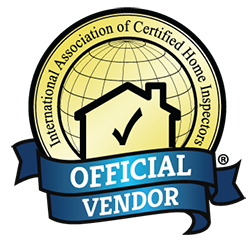Romo, Lorena “Lost in Translation: How to Read Your Home Inspection Report”, Inspection Support Network, Thu, Jun 17, 2021, original source here
If you’re getting ready to buy a home, there are tons of things to include on your list of to-dos. One of the most important steps in home buying is the inspection. Home inspections are designed to help you make wise decisions about a property you’re interested in based on its condition and other factors. Whether you’ve had a home inspection before or you’re new to the process, sometimes reading the home inspection report can be a bit confusing. This guide explores the details of your report so you’ll be able to decide whether or not the property you’re interested in is right for you.
Why do I need a Home Inspection?
There are many situations where you’d need a home inspection to help close a sale.
You’re selling a house. If you’re planning to sell, getting a streamline home inspection early can help you detect potential problems so you can make repairs now. The inspection will help you determine if the home has any issues that might deter buyers from making an offer or that could present problems later on.
You’re buying a house. Buyers should always get a home inspection since it can alert you to any underlying problems with the property that you can’t see with the naked eye. A home inspection report can also be used to negotiate the price with the seller later if you need to do so.
You want to know the value. While a home inspector can’t tell you the value of a home, they can give you some insight into its condition. Homes with minimal problems tend to be worth more, while homes in distress or properties that need a lot of attention can translate into a lower value or asking price.
What is included — and not included — in a home inspection report?
Once the home inspector is finished, you’ll receive a report for review. Here are some things that are included in a home inspection report, as well as a few things that aren’t typically covered in a standard home inspection:
Roof. The report will tell you the condition of the roof, including gutters, downspouts, flashings, skylights, chimneys, and the roofing material itself.
Ventilation & insulation. Your report should include how well the attic, foundation, and crawl spaces are insulated and how well everything is ventilated.
Exterior. Your home inspection checklist and report should include information about the condition of the exterior, such as vinyl siding or paint, windows, walkways, driveways, exterior stairs, decks, and exterior doors.
Structure. The home inspector should indicate the current condition of the home’s basement, foundation, or crawlspace and should include information about any cracks, signs of water penetration, foundation movement, and other structural concerns.
Cooling & heating. Check your report to find out about the condition of the HVAC system, including the condition and location of the thermostat and what type of system is used in the home.
Fireplace. If the home has a fireplace, the report will cover the condition of the damper doors, doors and frames, and other visible portions of both the fireplace and chimney.
Plumbing. This is one of the most thorough parts of a home inspection and should include information about the home’s water main and shut-off valves, pipes, and plumbing, the water heater, all toilets, sinks, tubs, and showers, as well as all drains and waste systems.
Electrical. Read your report carefully to find out about the electrical main, panel, all light fixtures and outlets, smoke and carbon monoxide detectors, and the home’s wiring system.
Doors & windows. The report will also include basic information about all doors, windows, flooring, walls, ceilings, and stairs. The inspector will confirm that all stairs have a proper railing and that all other components are properly sealed and/or in safe, good condition.
What’s not included. Your home inspection report likely won’t include information about the swimming pool, well and septic system, mold, radon, pests, or asbestos. These items are important, but you’ll need to hire a separate inspector for an additional fee if they’re a cause for concern.
How to Identify Red Flags
Now that you know what’s included in your report, how can you identify areas of concern? Some reports are color-coded to make reading and translating each section easier. The color green indicates that everything is fine, blue represents a minor concern, yellow a moderate concern, and red translates to a major concern that needs repair. To protect yourself and your investment, there are other things to look out for when reviewing the report:
- Look for words like “end of life” when referring to appliances, the air conditioning system, or even the roof. This term means that items like furnaces or refrigerators are older and it might be time to replace them soon.
- Check the results of the roof inspection, since this is one of the costliest items on a home. If the inspector noted that the roof is old or damaged, you may want to add a repair or replacement clause in your contract negotiations.
- If the presence of water in a basement is noted, it’s certainly a red flag that should be addressed with the seller, since water can indicate a damaged structure or the presence of mold.
- Notes referring to structural issues are also major red flags that can often make or break a sale.
- Be aware of possible safety issues notated on your report. For example, loose railings and stairs can be a major problem, and it could even cause your lender to reconsider funding the loan if the issue isn’t addressed before closing.
Important Home Inspection Terminology You Should be Familiar With
Home inspectors use lots of special terms and acronyms when completing a report. Here are some important terms that you should be familiar with so that you know what they mean for you.
(F) Functional. This letter or term means that the item inspected is working properly, allowing for normal wear and tear.
(NI) Not Inspected. If a component of the home isn’t inspected, it’s usually because it’s inaccessible or the utilities aren’t turned on.
(AE) Additional Evaluation Recommended. If you see this term, it means that the inspector recommends that you investigate the item further to ensure that it’s safe, working properly, or to determine the root cause of a problem.
(S) Safety Concerns. Pay close attention to this terminology, since it indicates a possible safety concern. Many lenders will require these items to be addressed before they’ll approve financing on a home.
(R) General Repair. This code indicates that a specific item is in need of repair, but it doesn’t always mean something extremely expensive or dangerous.
(D) Defect. If you see this term, it means that a component of the home needs to be repaired by a licensed professional.
Get a Pre-Purchase Inspection
Buying a home is one of the biggest investments you’ll ever make, which is why your real estate agent will recommend a pre-purchase home inspection if you’re serious about making an offer. Pre-inspections are designed to pinpoint any red flags or possible issues with the property before you make an offer. Always read the report carefully, and sit down with your Realtor so you can discuss your next move.
Pointers for Reading and Interpreting Your Home Inspection Report
Here are a few pointers that will help make reading and interpreting your home inspection report easier:
- If possible, arrange to be with the home inspector on the day of inspection so you can ask questions and get more details about any issues they might find.
- Focus on the summary page of the report, since it typically highlights any major concerns — along with repairs suggested by the inspector.
- Use the summary page to point you to more detailed information within the report, including any photos the inspector took.
- Take your time to thoroughly read through the report to make sure you don’t miss anything. It’s also a good idea to let your Realtor take a look at it, too.
- Make sure you ask the inspector questions before they leave the home. Most home inspectors are happy to answer questions or go into more detail, but they’re only available to ask on the day of the inspection.
- The most important things on the report are the electrical and plumbing systems, roof, foundation, and any indications of water damage or mold.
Now that you have your inspection, what’s next?
Once your home inspection is complete, where do you go from here? Here’s what to keep in mind before you make an offer or sign a contract.
- If only a few repairs are needed, your real estate agent may ask the seller to make them and provide you with a receipt or proof of completion. Alternatively, you can ask for credits toward your closing costs, then make the repairs yourself once you move in.
- Many buyers use the home inspection as a chance to negotiate the asking price. If the repairs are plentiful, you can put in a lower offer to make up for the cost.
- In some cases, the damages might be so severe that it’s best to back out of the deal altogether. Consult with your Realtor if you think that the home needs too much work or that it could become an expensive — or even dangerous — endeavor for you later on.
- If the inspection looks good, you can celebrate and move forward with your offer.
Buying a house is an exciting experience, but it’s important to do your due diligence in order to make sure that you’re getting the best property possible. A home inspection will ensure you’re aware of any potential problems that might cause major headaches later on. And if the report comes out clean, you can move into your new and forever home with peace of mind, knowing that it’s a solid structure with no major problems hiding in the wings.
All credits and original blog author – Romo, Lorena “Lost in Translation: How to Read Your Home Inspection Report”, Inspection Support Network, Thu, Jun 17, 2021, original source here











